BAGMATI RIVER, Kathmandu, Nepal |
||
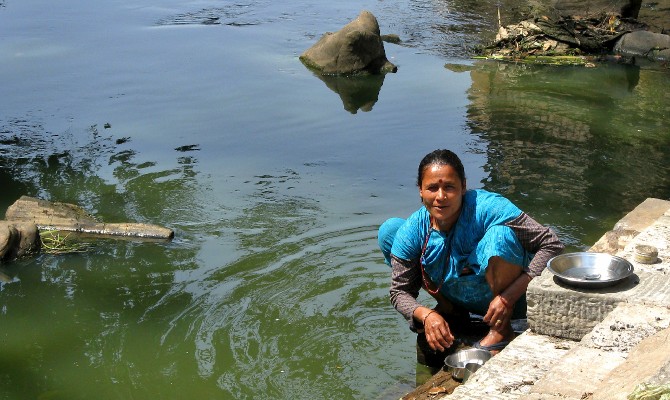 |
||
Washing dishes. |
||
————————————————————————————————— This essay was originally posted to National Geographic's Water Currents blog on August 1, 2015. —————————————————————————————————
I am clogged with human ash and bits of bone. Garlands of marigolds float on my body as an old monkey watches. I have always borne the remains of the dead, who are taken to the Pashupatinath Temple on my banks near Kathmandu, Nepal, placed on pyres, ignited, and blessed in Hindu ceremonies. The cremated are swept into my murky waters to plod along toward the confluence with the great mother Ganga as I join other tributaries downstream. |
||
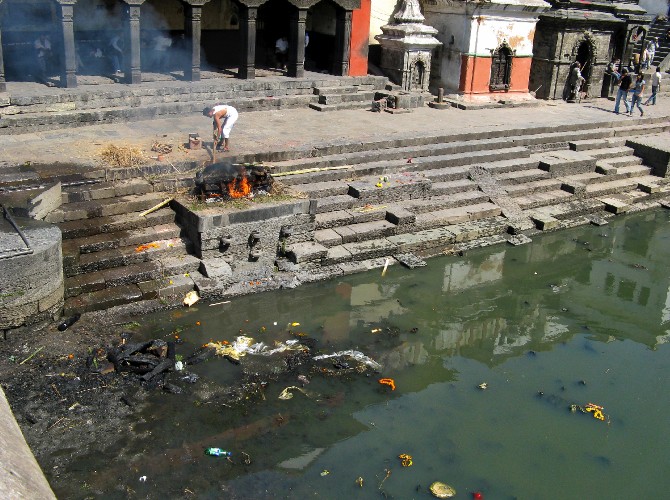 |
||
Funeral Pyre. |
||
My primary role is as a source of spiritual salvation for millions of Hindus, who take a dip within my waters. And yet, at this particular site, my plight has been the same for decades -- an open sewer, full of garbage from an ever-increasing population. I try to flow, but really I just slog along. There have been gallant efforts by local valley dwellers in recent years to try and clean my body and rid my ribs of slush and guck, but it is an overwhelming task. |
||
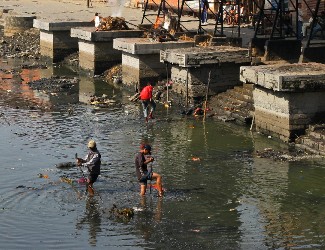 |
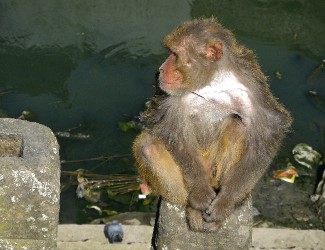 |
|||
Searching for gold teeth. |
Old monkey. |
|||
Most days my banks here at the temple are ablaze with half a dozen wooden funeral pyres built on the concrete ghats of my shore. There are bent men and boys wading knee-deep as they search for small remnants that might have some value, such as gold from teeth.
Nearby, sitting on the steps of the temple, Sadhus wearing orange robes chant prayers. Holy men perform complex Hindu rituals for families. |
||
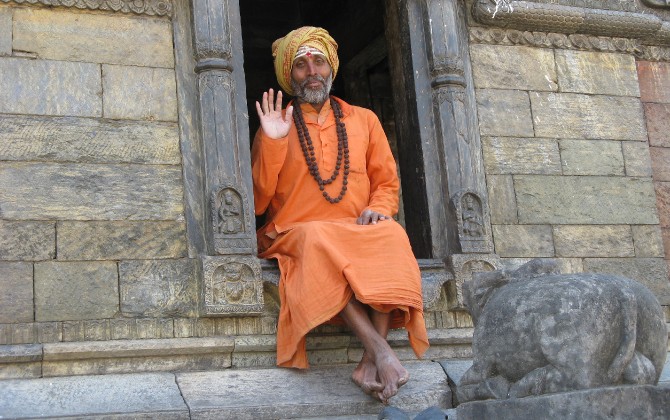 |
||
Sadhu. |
||
 |
||
Spiritual ceremony. |
||
 |
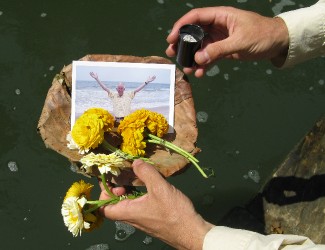 |
|||
Holy man. |
Ashes of Leon Rutland. |
|||
A friend from the United States, Basia Irland, and her son, Derek, bring to me a traditional banana leaf bowl bedecked with flowers and the ashes of her father. Leon Watson Rutland had always wanted to visit the River Ganges, but had not had the opportunity, so this mother and son have brought his ashes to float downstream to the Great Mother River. Even with all my filth, I am still considered Holy, and this family reveres my presence.
Since the infrastructure in most of Nepal, and certainly in Kathmandu, is sorely lacking, the residents living in the nearby caves, still come to my waters to wash their clothes and submerge their dishes into my putrid bowels in a sad attempt at cleanliness.
My daily life is hard, but in the days after a 7.8 magnitude earthquake devastated Nepal on April 28, 2015, killing at least 8,000 people, my role as a holy river and sacred site, became overbearingly difficult. Thousands of bodies were brought to the ghats here to be cremated day and night. It was unrelenting. The fires burned around the clock, and all the remains of the loved ones were shoveled into my body.
Nepal is amongst the world’s most unsanitary nations with a 2011 government survey finding that 45 percent of Nepali’s did not use toilets. This is one reason that about 82 percent of the drinking water is contaminated with fecal bacteria. With so much devastation from the earthquake, diseases such as cholera are easily spread, making an already difficult situation even worse.
So, please keep me and my people who live in this beautiful mountainous region in your thoughts whenever you turn on a tap and receive clean water to drink, flush toilets, wash clothes, and brush your teeth. |
||
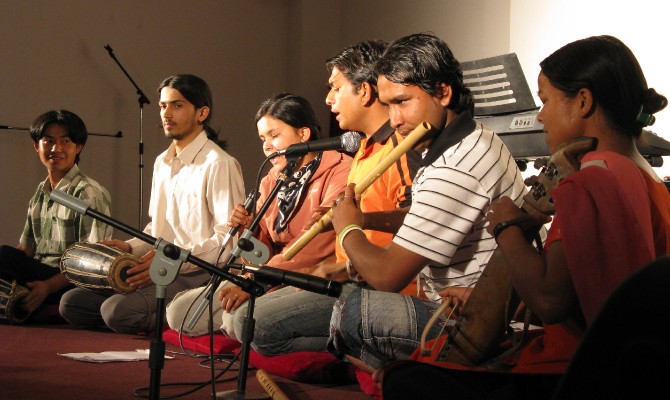 |
||
Musicians. |
||
At the Kathmandu School of Music, young musicians, under the direction of Lochan Rijal, play their traditional instruments, and write songs about me and my plight. Hear them sing and raise your own voice in my behalf. |
||
next page: Virgin River >
< previous page: Portneuf River




































